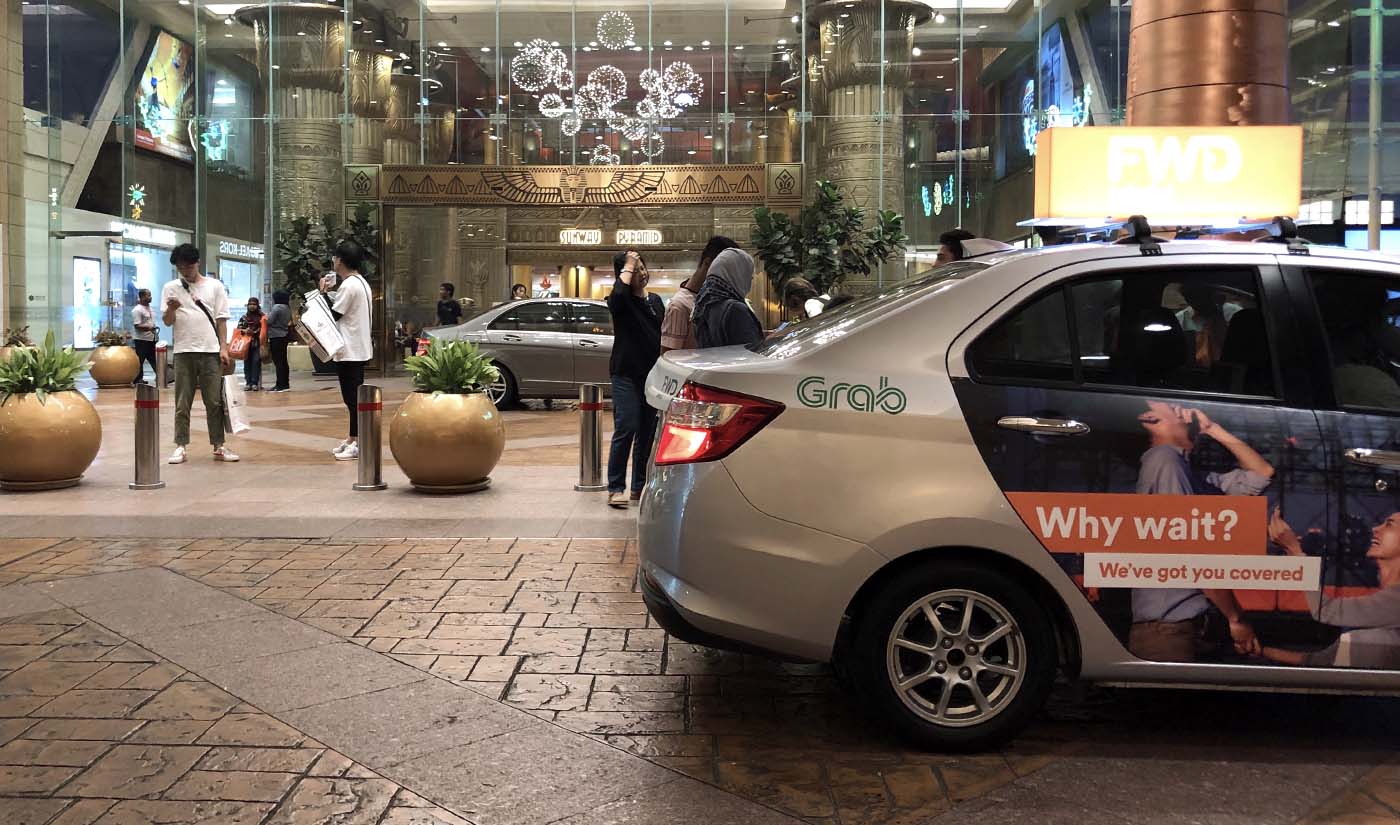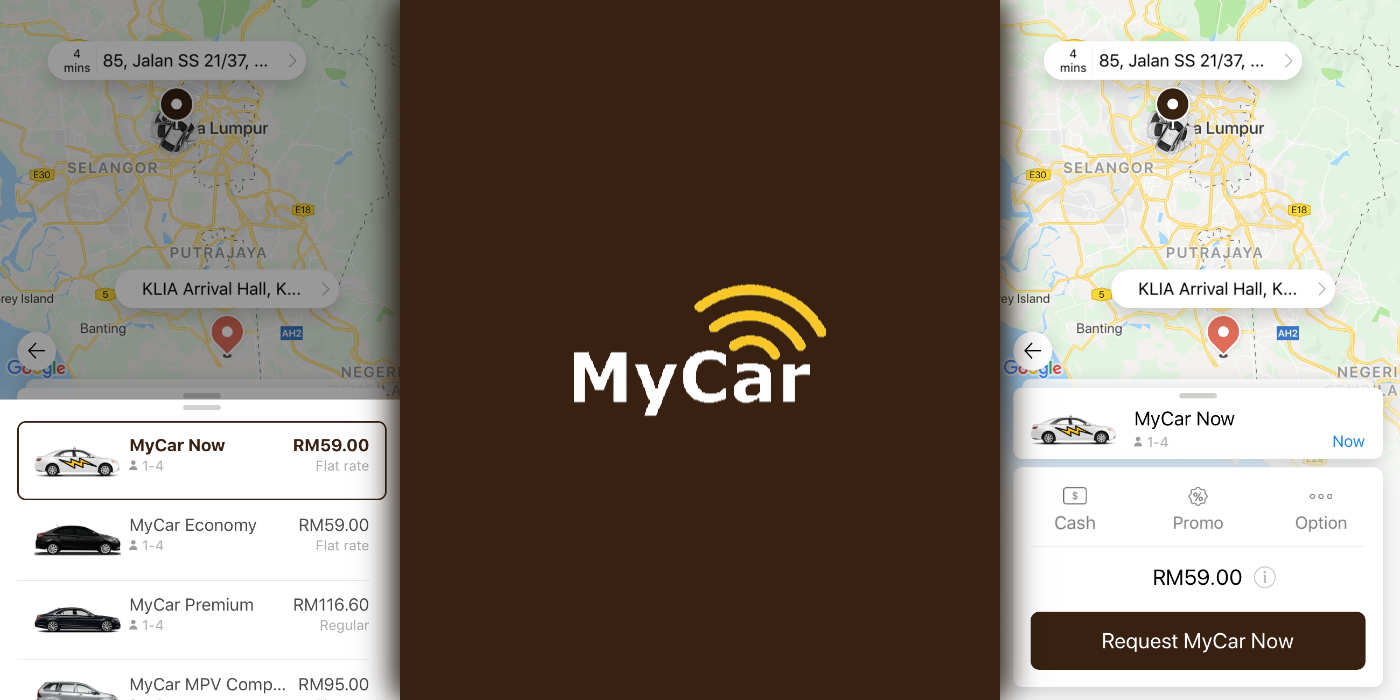Ever since the acquisition of the Uber operations in South East Asia back in March 2018, Grab has been ubiquitous in the ride-sharing scene in Malaysia and many other South East Asian countries.
Since then, Grab has expanded their service to other areas of business, including the introduction of GrabPay, Grab Food and even their own logistics service, GrabExpress.

However, with the lack of competition, Grab also leaves consumers with little choice when they silently restructured their rewards system and increased ride fares. With the incoming requirement of PSV license for e-hailing drivers, users have been warned to expect increased fares and longer waiting times due to reduced drivers on the road.
Worried that your daily commute will be affected? Here are four other alternatives to Grab that you should try now.

MyCar
MyCar is probably the biggest e-hailing service available in Malaysia after Grab. Although having just celebrated their first anniversary this year, MyCar already boasts a monthly ridership of more than 1.2 million, 70,000 drivers, and claims to own 15% of the local e-hailing services market share.
Similar to Grab, MyCar offers a variety of vehicle types, including larger vehicles capable of ferrying up to six passengers depending on your needs. Upon my own comparison, I’ve found that MyCar offers their rides at a lower price than Grab on most routes (KL to KLIA airport at only RM59!), particularly at peak hours. MyCar is available in most major cities in Malaysia.

MULA
MULA was initially launched in 2016 as a driver-hire service; offering their own fleet of vehicles to ferry users. They have since expanded their service to a more typical e-hailing service, offering Instant Rides as well as Chartered Vehicles by the hour. To position themselves uniquely in the market, MULA offers large MPVs capable of carrying up to 10 passengers.
Besides, MULA also offers a female-only MULA Pink service to make their journeys feel a little safer. However, upon using the service, I find it confusing to differentiate between their fleet vehicles and the e-hailing services powered by MULA Mate. Perhaps MULA can benefit from making it clearer for customers to book their preferred ride. MULA accepts cash and Touch n’ Go eWallet payments, and is available in Penang, Klang Valley, Johor, Perak, Seremban and Melaka.

Dacsee
Arguably the most unique entry in this list, Dacsee is a ride hailing service fully based on the blockchain technology. Dacsee allows riders and drivers alike to build their own community or “circle of friends” as Dacsee calls it, allowing you to earn loyalty rewards through referrals. Riders can directly re-book from drivers saved in your friends list, or conversely block any unsatisfactory drivers from previous trips from being re-booked again.
As Dacsee is built upon their own blockchain network, all transactions will be recorded on their public ledger, resulting in a fair and transparent way to resolve issues. Dacsee allows payment through their own “cryptocurrency token” in addition to cash and credit card options, and is now available in Klang Valley, Ipoh, Penang, Johor Bahru, Sabah and Sarawak.

EzCab
EzCab stands out from the crowd by integrating the regular metered taxi in addition to their own fixed fare e-hailing fleet. Taxi drivers have the option to accept a fixed fare trip as well, providing a win-win situation for both the consumers and drivers. EzCab offers a wide range of vehicles ranging all the way up to a 9-seater EzVan.
As an added bonus, EzCab supports most of the e-payment facilities in Malaysia, including Maybank’s QRPay, even on metered taxi rides. No surprises though, EzCab does not support GrabPay as a valid payment method. Generally, the application is a fairly standard e-hailing service with reasonable prices and regular functionalities, however the biggest complaint online is the lack of drivers available on the service.

With the number of cars on the roads today, the ride-hailing industry can be a very lucrative business in Malaysia, hence the rise in competitors vying for a slice of the e-hailing pie. Fortunately for us consumers, this means that we will likely not be stranded while looking for transport to your next destination anymore.




